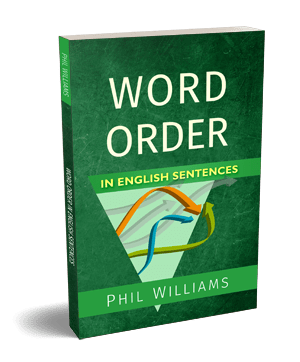
A while ago, I began a series of articles to show how each tense can be combined with the other tenses, but we only covered the past tenses (with the past simple and continuous here and the past perfects here). The idea was to demonstrate how a single aspect can connect to all the other aspects; past, present and future in the simple, continuous, perfect and perfect continuous. Today, I’m revisiting this idea to show how the present simple can form sentences with other tenses.
As before, I am demonstrating the differences by repeating an initial clause, for the simplest comparisons. The present simple can be used in two different ways which leads to lots of different possibilities, so I’ve provided two versions of this list. First, we have the present simple used for a timeless rule/pattern (“I walk my dog every day”), then the present simple as used for states, conditions or feelings (describing a time-based condition, “I feel happy”).
Present Simple for Timeless Rules
While a timeless rule presented in the present simple might not obviously fit with other tenses, it combines neatly with various times that offer explanations for the rule/pattern. The other tense therefore mostly places an explanation at a particular point in time. One exception here is the present continuous, which can provide a contextual activity for the rule.
Note that while these sentences work grammatically on their own, they may require extra context to make the ideas complete. For example, the past perfect imply that we have a reason to place the explanation at that point in past time (“the vet had said” something before an event in the past, which in turn triggered the walking every day). While we can have a sentence with just the present simple and past perfect, for example, strictly speaking it would work best with a past simple clause to justify the timing. I’ve added some implied context after the sentence to make this clear.
- I walk my dog every day.
- I walk my dog every day while my partner is cooking dinner. (+Present Continuous)
- I walk my dog every day as I have learnt how much exercise he needs. (+Present Perfect)
- I walk my dog every day as I have been trying to keep him fit. (+Present Perfect Continuous)
- I walk my dog every day because I took responsibility for him. (+Past Simple)
- I walk my dog every day because he was getting fat. (+Past Continuous)
- I walk my dog every day as the vet had said this was necessary. (+Past Perfect) [e.g. implied context: “… when he gave me advice before we got the dog.”]
- I walk my dog every day because I had been getting unhealthy sitting at home. (+Past Perfect Continuous) [e.g. implied context: “… and I decided to do something about it.”]
- I walk my dog every day but I will not be able to next week. (+Future Simple)
- I walk my dog every day and I will be doing so all summer. (+ Future Simple Continuous)
- I walk my dog every day and we will have walked ten miles by the end of this week. (+ Future Perfect)
- I walk my dog every day and I will have been doing so every day for two years by next week. (+Future Perfect Continuous)
Present Simple for States, Feelings and Abstract Verbs
Depending on the verb, this meaning could be adapted in many ways, though again it is likely to be paired with an explanation, which could come in any tense depending on the timing. States in the present simple can also be treated as timeless, however, in which case they can combine with other tenses (such as with the present continuous) to demonstrate a pattern. As above, sometimes the use of a certain tense implies a context that might not be explicitly stated, so while the sentences may be grammatically correct on their own they may require extra information to complete the understanding. Again, I’ve put some suggested contexts for these.
- I feel happy.
- I feel happy when I am dancing. (+Present Continuous)
- I feel happy because I have found a new job. (+Present Perfect)
- I feel happy because I have been doing well at school. (+Present Perfect Continuous)
- I feel happy because I bought a new sofa. (+Past Simple)
- I feel happy as I was getting bad grades at school until last week. (+Past Continuous) [e.g. implied context: “…but I studied harder and improved.”]
- I feel happy as my favourite TV show had been cancelled, but then it was renewed. (+Past Perfect)
- I feel happy because I had been getting impatient waiting for my bus, but it came on time. (+Past Perfect Continuous)
- I feel happy and I will let everyone know it. (+Future Simple)
- I feel happy and I will be sharing the reason why later. (+ Future Simple Continuous)
- I feel happy because we will have been together for 3 years this spring. (+ Future Perfect)
- I feel happy as I will have been working at a job I love for 10 years by July. (+Future Perfect Continuous)
These aren’t the only ways the tenses might be combined, merely some examples, but I hope they give you some ideas and help demonstrate the uses.
Want to master the English tenses?
Learn all the rules with The English Tenses Practical Grammar Guide, and practise them with The English Tenses Exercise Book, which contains 160 exercises.








Very inspiring
theory well explained. books and articles incredibly helpful